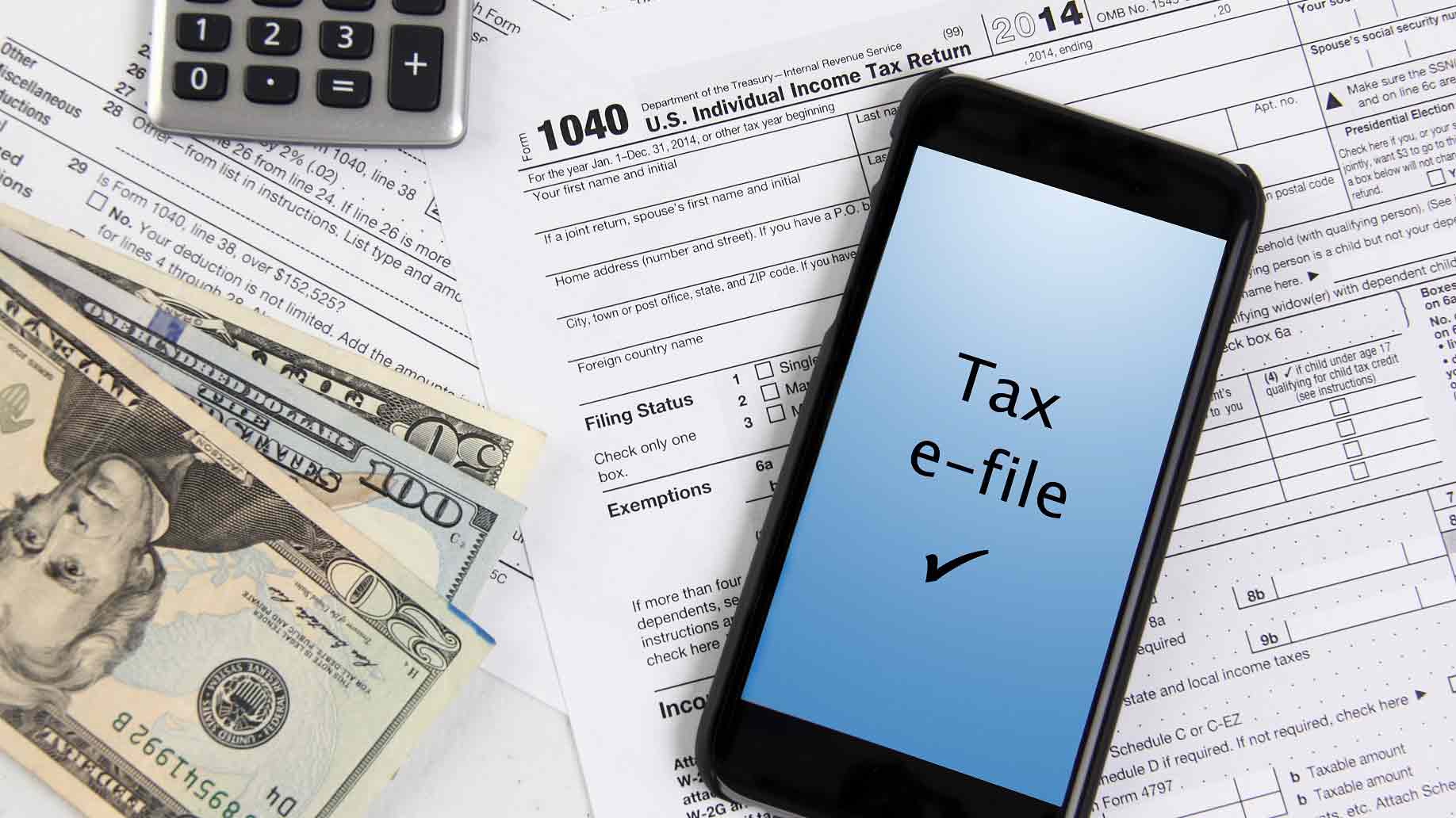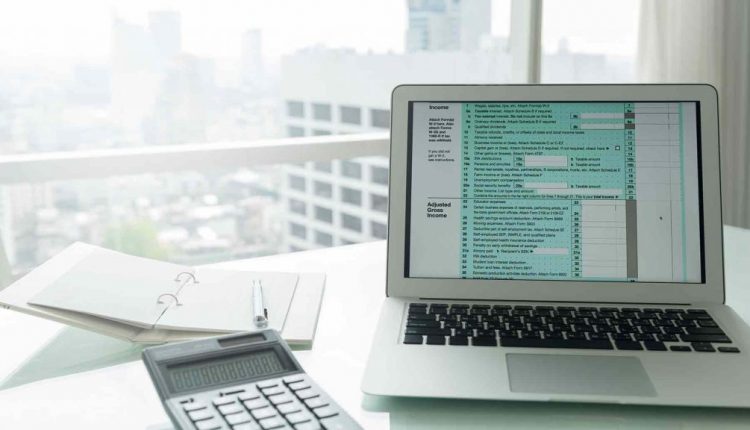How to Pay Federal Estimated Taxes Online to the IRS
It often seems traditional employees get the better part of the deal when it comes to paying taxes. Some money is withheld from their check each pay period, so all they have to do is file by the IRS tax deadline to get a tax refund. But freelancers and small business owners usually don’t have a human resources department pulling tax money out of their paychecks, so they have to pay estimated taxes four times a year.
The U.S. has a pay-as-you-go taxation system. Just as income tax is withheld from employees every pay period and sent to the IRS, the estimated tax paid quarterly helps the government maintain a reliable schedule of income. It also protects you from having to cough up all the dough at once. While it’s a little extra work, filing your estimated tax payments each quarter helps you stay on top of your taxes.
What Are Estimated Tax Payments?
When you’re an employee, it is your employer’s responsibility to withhold federal, state, and any local income taxes and send that withholding to the IRS, state, and locality. Those payments to the IRS are your prepayments on your expected tax liability when you file your tax return. Your Form W-2 has the withholding information for the year.
When you file, if you prepaid more than you owe, you get some back. If you prepaid too little, you have to make up the difference and pay more. Employee withholding is based on the most recent Form W-4 filed with the employer’s HR department. If you’re in business for yourself, however, you need to be your own HR department and regularly send the IRS money.
Since, as a self-employed person, nobody withholds income taxes for you, you may need to make estimated payments. Paying estimated taxes requires you to estimate in advance how much you expect to owe the government in taxes for the current tax year. You then send in four quarterly payments that together total that amount. The due dates for quarterly estimated payments fall near the middle of the months of April, June, September, and January.
If you don’t make quarterly estimated tax payments and are required to, the IRS will hit you with a penalty for failure to pay estimated taxes. To avoid this penalty, you need to know if you’re responsible for estimated taxes, how to determine the amount, and how to send your payments efficiently.
Who Needs to Pay Estimated Taxes?
If you fall into one of these two groups, you most likely need to make estimated tax payments.
1. Self-Employed Full-Time Workers and Small Business Owners
If you file as a sole proprietor, S corporation shareholder, partner, self-employed individual, or single-member LLC, you likely need to pay estimated taxes regularly.
2. Freelancers With a Regular Job That Withholds Taxes
If you have a full-time job with tax withholding and also work on the side, and you either receive a 1099-MISC or have clients or customers who pay you directly, you need to determine how much of your income is untaxed. If your freelance work constitutes a significant portion of your income, you should probably pay estimated taxes.
A good rule of thumb is that if your side income is less than 10% of your gross income – earnings before taxes – you probably won’t need to make estimated tax payments.
How to Estimate Your Taxes
If you use tax-preparation software and you owe $1,000 or more, the software typically calculates estimated tax payments. It also generates four Form 1040-ES vouchers for you to use to mail estimated payments for the coming year. Otherwise, follow the IRS instructions for Form 1040-ES to determine how much you should pay in estimated taxes. Form1040-ES includes vouchers if you choose to send those payments in by mail.
If you receive your self-employment income irregularly throughout the year, you may be able to pay different amounts throughout the year to more closely match your income. To avoid penalties, be sure to pay the minimum amount required for the quarter by the quarter’s due date. You can also make more than four estimated tax payments during the year. You can get a 1040-ES payment voucher to fill out online to send with your extra payment.
Freelancers and independent contractors are frequently surprised at the sizeable tax bill they face when they have a nice net profit for the year. The high amount is because they not only pay income tax on the profit, but they have to pay self-employment (SE) tax as well. Self-employment tax is part of your overall tax liability and is one thing that makes estimating total tax liability difficult.
There is a formula you can use to figure your self-employment tax. Take your net profit from Schedule C and multiply it by two numbers: 92.35% and 15.3%. The result is your SE tax. For example, if your net profit is $10,000, your SE tax is calculated as follows: $10,000 x 0.9235 x 0.153 = $1,413.
Half of this amount ($707) reduces your AGI and lowers your income tax by a small amount, depending on your tax bracket. But if you calculate your estimated taxes using the full amount of your SE tax, you’ll be sure to pay enough. Of course, tax software considers SE tax when it generates your 1040-ES vouchers.
How to Pay Estimated Taxes

You have a range of options for submitting estimated tax payments. Besides mailing your payment, you can pay online by debit or credit card, which incurs a convenience fee, or by using the EFTPS system, which has no fee, but you have to enroll. You can pay by ACH transfer from your checking account using free IRS Direct Pay or pay by phone using the EFTPS system.
Registering with EFTPS isn’t complicated. You just need a bank account, Social Security Number or Employer Identification Number, and a mailing address. You must use the mailing address the IRS has on file. The IRS will mail you a PIN in about a week. Using that PIN, you can get into their website anytime to schedule a payment. Once you set up your bank account with EFTPS, you can schedule withdrawals.
Most tax software packages have the option to schedule estimated tax payments for the coming year by direct debit. You can schedule the amount of the payment and the date you’d like the payment deducted from your account.
If you want a little help saving money for your quarterly tax payment, you can set up a savings builder account through CIT Bank and move money into it each month. This account will earn up to 1.80%, which makes it one of the highest-interest earning savings accounts available.
When to Pay Estimated Taxes
You should pay taxes on the earnings from each quarter after the quarter has ended. However, the quarters aren’t equal – the second quarter is two months, and the fourth quarter is four months.
Estimated tax payment deadlines are:
- First Quarter (January 1 to March 31): Estimated taxes due April 15, 2020
- Second Quarter (April 1 to May 31): Estimated taxes due June 15, 2020
- Third Quarter (June 1 to August 31): Estimated taxes due September 15, 2020
- Fourth Quarter (September 1 to December 31): Estimated taxes due January 18, 2021
Escape the Underpayment Penalty
You may be liable for an underpayment penalty if you pay less than 100% of your tax liability by the tax filing deadline. You can avoid the penalty if you meet one of the exceptions below:
- You’ve already paid – through estimated tax payments or withholding – the lesser of the amount you paid in taxes last year or 90% of what you owe this year. The one exception is that you must pay 110% of last year’s tax liability if your gross income was at least $150,000.
- Your tax liability is $1,000 or less for the entire year.
- You had no tax liability last year.
- Your total withholding for the year, plus estimated payments you made, is within $1,000 of your total tax liability on the deadline.
Final Word
If you’re a “better safe than sorry” taxpayer and you’re concerned about underpayment, you can either increase your federal income tax withholding if you have a full-time job or overestimate your quarterly tax payments if you’re self-employed. It may feel good at tax time to get a refund, but remember that the money you’re getting back is money you loaned the government at no interest.
The IRS has an initiative called “Pay As You Go So You Won’t Owe” to educate the more than 10 million taxpayers they anticipate will be issued a penalty for not making estimated tax payments. They recommend adjusting your withholding or making estimated tax payments as a way to avoid the penalty.
Think of estimated tax payments as a budgeting tool. They not only make you think about your income and expenses a year in advance, but they also help you budget for your tax payments to avoid a penalty. Budgeting for your payments is one strategy to help manage your cash flow.
Are you making quarterly estimated tax payments? What tools do you use to estimate your tax due and make sure you don’t miss deadlines?


